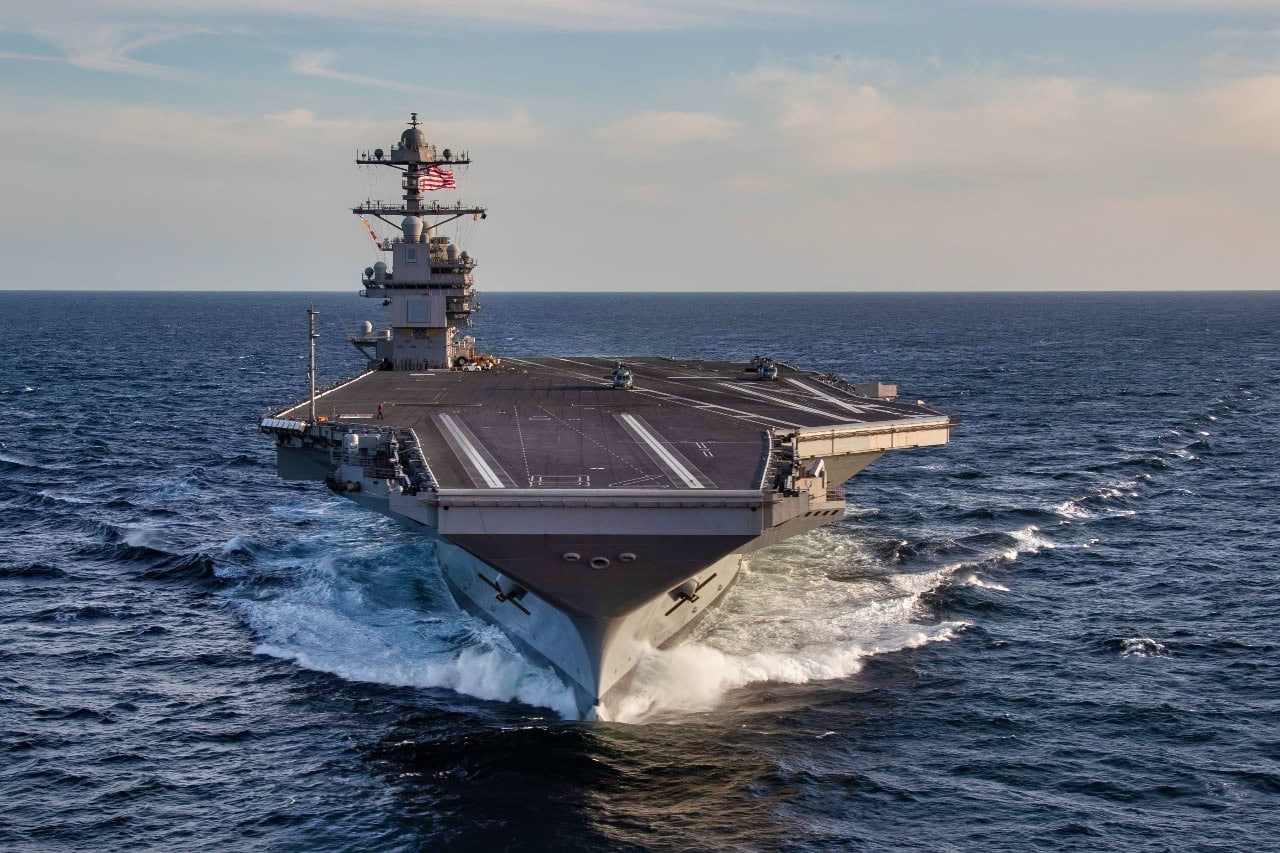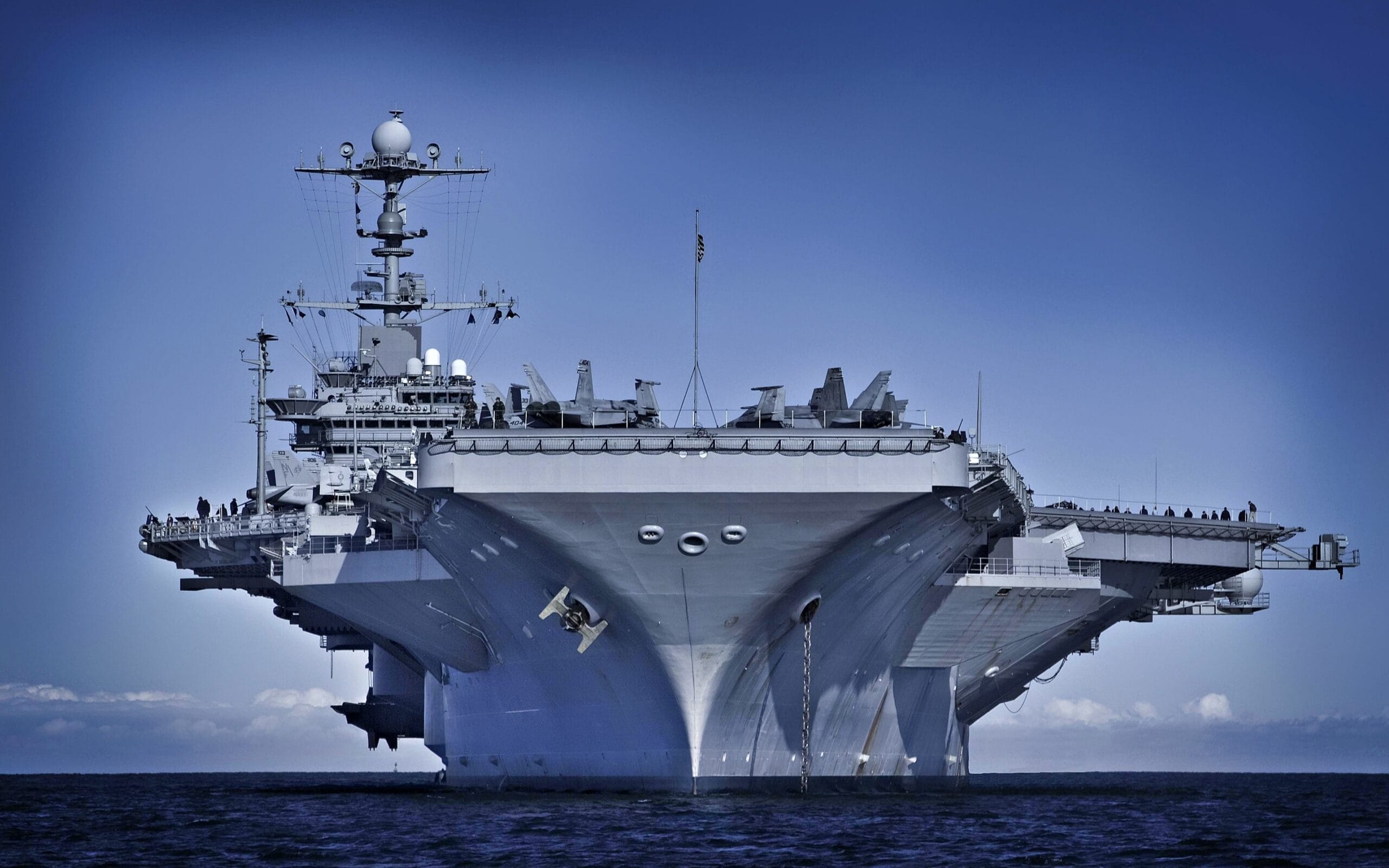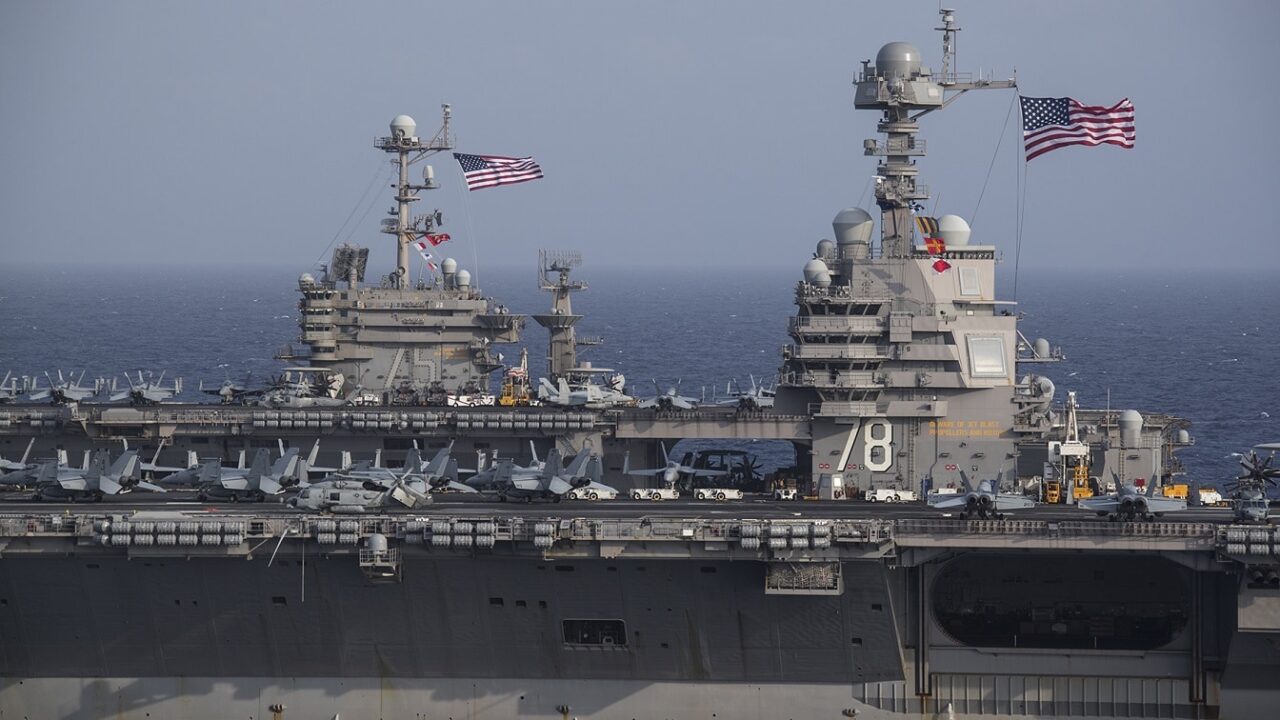How useful, how necessary and how vulnerable are US aircraft carriers is a debate which has been going on for decades now.
The conversation went up a notch or two during the 1981 Falkland Islands War when an Argentine Air Force French-made Super Étendard aircraft sunk the HMS Sheffield Type 42 destroyer with a single (also French-made) Exocet anti-ship missile (ASM).

Essex-Class Aircraft Carrier. Image Credit: Creative Commons.
The concerns about an attack on a carrier increased further when in 1987 a US naval frigate, the USS Stark, was struck by two Exocet ASMs believed to have been fired by an Iraqi Air Force Dassault Mirage F1. The impact killed 37 US naval personnel, injured 21 others and caused serious damage to the ship.
The Stark incident was doubly troubling in that one of the reasons offered up by the Iraqis for firing on the US ship was that the pilot thought it was an Iranian oil tanker, a large target, and a mistake that could easily have been made regarding a US aircraft carrier.
The other more significant concern was the subsequent discoveries of maintenance and design problems with the electronics on board the Stark that controlled the ship’s defensive systems. They were out of commission at the time of the attack, and the ship’s captain could not order his crew to fire on the Mirage F1.
The 21st Century and Growing Threats
In the age of ASMs designed by the Russians, the PRC, India, Pakistan, and Iran – plus any number of European-made anti-ship weapons that are sold throughout the world – the threats to aircraft carriers are constantly increasing.
Then there are the Russian and Chinese hypersonic and ballistic missiles designed specifically to kill carriers.
The PRC have sold many of the ASMs to Iran over the years, and Russia was considering selling its latest ASM designs to the Houthi rebels in Yemen.
In comparison with these more modern-day weapons, the Exocet, by contrast, is a much less powerful missile.

The Ford-class aircraft carrier USS Gerald R. Ford (CVN 78) and the Italian aircraft carrier ITS Cavour (CVH 550) transit the Atlantic Ocean March 20, 2021, marking the first time a Ford-class and Italian carrier have operated together underway. As part of the Italian Navy’s Ready for Operations (RFO) campaign for its flagship, Cavour is conducting sea trials in coordination with the F-35 Lightning II Joint Program Office’s Patuxent River Integrated Test Force to obtain official certification to safely operate the F-35B. Gerald R. Ford is conducting integrated carrier strike group operations during independent steaming event 17 as part of her post-delivery test and trials phase of operations.
In the early 2000s, the threat posed by these kinds of missiles was downplayed in a report by the Lexington Institute on carrier vulnerability.
The author’s conclusions in that study were:
“The U.S. Navy expects to deploy effective defenses against all classes of tactical and theater ballistic missiles by the end of the current decade, largely through the upgrade of existing sensors and weapons. For example, upgrading software for the Aegis combat system and equipping Hawkeye early-warning aircraft with an infrared search-and-track sensor would greatly reduce the challenge of tracking hostile ballistic missiles – particularly when networked with other joint assets already in place or under development.
“Moreover, the threat posed to carriers by ballistic missiles over the next 20 years appears relatively minor. The ballistic warheads of potential adversaries lack the terminal guidance or maneuvering capability that would enable them to home in on carriers during the final moments of flight. Such warhead/seekers are very difficult to build due to the high temperatures and speeds associated with atmospheric re-entry. But without those features, attackers would have to use thousands of warheads in barrages in order to have some hope of harming a moving aircraft carrier – unless nuclear warheads were used, a step few enemies are likely to be able or willing to take.”
Today’s Environment for the Navy’s Aircraft Carriers
Two and a half decades later, there are those in the naval warfare community who point out that the story about aircraft carriers being vulnerable never goes away.
Said one commentator, “The belief that America’s large-deck, nuclear-powered aircraft carriers are vulnerable to attack by [insert the latest threat here]” somehow never goes out of fashion.

NRL is currently working with Naval Sea Systems Command, Naval Systems Engineering Directorate, Ship Integrity & Performance Engineering (SEA 05P) to transition the new pigment combination into a military specification. The most recent vessel to receive it was USS George Washington (CVN 73).
At the top of the list of reasons why this is an erroneous assumption is that carriers are not easily tracked, targeted, or even located in an area the size of most of their at-sea assigned patrol areas.
As another commentator pointed out, “The only practical way to continuously track carrier movements in the Pacific is from orbit, and if the goal is to actually attack the carriers, then Beijing would need over a hundred costly satellites in low earth orbit synchronized with long-range anti-ship weapons and an agile command system. Beijing doesn’t have those things today and won’t anytime soon. It hardly matters, since US war plans call for preempting such systems before they can go into action. So don’t take all those stories about China’s carrier-killing missiles too seriously, because the missiles are useless if the target can’t be found.”
In the next step of the process – the same analysts explain – finding the carrier is “actually just the first step in a complex “kill chain” that Chinese forces would need to execute. Once a carrier is found, its location needs to be fixed; the carrier needs to be tracked; it needs to be targeted by one or more weapons that are within range and sufficiently powerful to disable that carrier; the carrier needs to be engaged; and defenders must then assess the success of their actions.

Shtorm Aircraft Carrier. Image Credit: Artist Rendering/Creative Commons.
“If this kill chain is disrupted at any point in its sequence of tasks, the whole process breaks down. [US] Navy planners are confident they can do that, relying on a layered defense that includes the carrier’s air wing, networked escort vessels hosting the world’s most advanced air defense system, a redundant overhead reconnaissance capability and the carrier’s own onboard defenses.”
There are many other aspects to the argument. Still, the point remains that the nations most talked about as the major threats to a US carrier have one-third or less the number of years in trying to sink one that the US has in operating and being prepared to defend them.
Experience usually – in warfare – triumphs over bravado and reckless folly.
About the Author: Reuben F. Johnson
Reuben F. Johnson is a survivor of the February 2022 Russian invasion of Ukraine and is now an Expert on Foreign Military Affairs with the Fundacja im. Kazimierza Pułaskiego in Warsaw. He has been a consultant to the Pentagon, several NATO governments and the Australian government in the fields of defense technology and weapon systems design. Over the past 30 years he has resided in and reported from Russia, Ukraine, Poland, Brazil, the People’s Republic of China and Australia.

